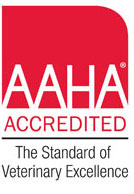Educational Articles
-
A cesarean section is a surgery to remove kittens from the uterus and is most commonly performed as an emergency procedure when there is difficulty with natural birth. During the immediate recovery period, the mother and kittens must be closely monitored and begin eating/nursing within a few hours. If you have any concerns about their health, you should immediately have your veterinarian examine the kittens and their mother.
-
Chediak-Higashi Syndrome is a rare genetic disease of smoke-blue Persian cats. The condition affects how the body processes waste products, resulting in changes within the body’s cells and leading to abnormal pigmentation of the skin and coat. The condition can lead to eye abnormalities and problems with blood clotting, but most cats can have a normal lifespan with careful health monitoring.
-
This handout discusses the growing trend for designer dog breeds – the crossing of pure dog breeds to create dogs that combine “the best of both worlds.” The pros and cons of this practice are highlighted, along with some of the more common designer breeds currently available.
-
Eclampsia in cats is a rare emergent condition of hypocalcemia that generally occurs one to four weeks after giving birth but can occur before. Risk factors include a poor diet, abnormal parathyroid gland, and calcium supplementation during pregnancy. Signs of eclampsia start as restlessness, panting, and stiffness and can progress to disorientation, tremors, inability to walk, and convulsions. Treatment includes intravenous fluids, careful intravenous calcium supplementation, and other supportive medications followed by oral supplementation and weaning kittens as soon as possible or supplementing their diet with milk replacer.
-
Eclampsia in dogs is an emergent condition of hypocalcemia that generally occurs one to four weeks after whelping but can also occur shortly before giving birth. Risk factors include a poor diet, small breed dogs, abnormal parathyroid gland, and calcium supplementation during pregnancy. Signs of eclampsia start as restlessness, panting, and stiffness and can progress to disorientation, tremors, inability to walk, and convulsions. Treatment includes intravenous fluids, careful intravenous calcium supplementation, and other supportive medications. This is followed by oral supplementation and weaning puppies as soon as possible or supplementing their diet with milk replacer.
-
The estrous cycle, better known as a female cat's heat cycle, consists of several stages; the stage called estrus refers to when the female is sexually receptive. This handout explains the age of onset, the clinical signs of a cat in heat, the length and phases of the heat cycle, as well as the benefits of spaying a female before her first heat cycle.
-
Female dogs will have their first estrous (reproductive or heat) cycle when they reach puberty. Each cycle consists of several stages; the stage called estrus refers to when the female can become pregnant. This handout explains the cycle stages and signs as well as how to prevent mating and pregnancy in your female dog.
-
Estrus (heat) begins when a female dog reaches sexual maturity and occurs about twice per year, although it varies from dog to dog. From the beginning of a female’s estrus period, she will be attractive to male dogs, though she will usually not be receptive or allow mating until seven to ten days into her cycle. The time of mating is extremely critical and it is highly recommended to have your female tested to determine the optimal days for breeding.
-
False pregnancy refers to a display of maternal behaviors, combined with the physical signs of pregnancy following estrus, in unspayed female dogs that are not actually pregnant. Signs include physical and behavioral changes, outlined in this article. Mild cases typically are not treated, but treatment may be needed for more serious cases. If your dog is not used for breeding, spaying is recommended.
-
This handout discusses the need for ensuring your pregnant cat is receiving adequate nutrition to make sure both she and her kittens thrive during this time of increased demands on her body. Feeding and diet suggestions are provided.

